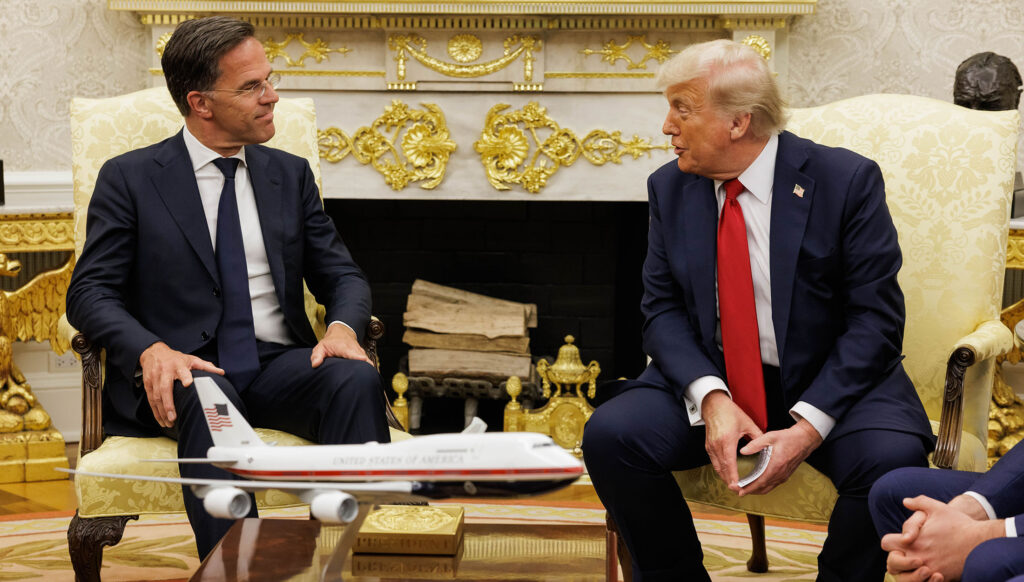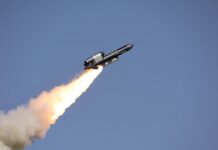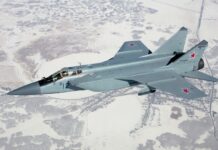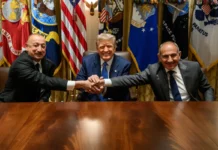US President Donald Trump has signalled a major shift in his administration’s support for Ukraine as it battles to stem a Russian invasion of the country now well into its third year.
Meeting with NATO Secretary General Mark Rutte in the White House on 14 July 2025, Trump announced that he has approved the transfer of both defensive and offensive weapons to Ukraine – albeit with NATO nations paying for them – while piling economic pressure on Russia if it doesn’t move to end the war.
“This is billions of dollars worth of military equipment which is going to be purchased from the United States,” said Trump, “going to NATO, and that’s going to be quickly distributed to the battlefield.”
“We want to make sure Ukraine can do what it wants to do,” Trump said in a press conference with Rutte in the Oval Office. Asked to clarify what kinds of weapons were involved in the deal, Trump said “everything”.
The weapon transfers will include much-needed Patriot air defence systems, which Ukraine desperately need to stave off intensive Russian aerial bombardments. It is understood that Patriot units will be sent to Ukraine by European states, which will then acquire replacement systems from the United States.
The NATO secretary general confirmed the US had decided to “massively supply Ukraine with what is necessary through NATO”, with European nations footing the bill.
Regarding the economic pressure, Trump said, “We’re going to be doing very severe tariffs if we don’t have a deal in 50 days. Tariffs at about 100%; you’d call them secondary tariffs. You know what that means.”
“I use trade for a lot of things,” Trump added, “but it’s great for settling wars.”
A White House official clarified to CNN that when Trump referred to “secondary tariffs”, he meant 100% tariffs on Russia and secondary sanctions on other countries that buy Russian oil.
“They’re secondary sanctions. It’s sanctions on countries that are buying the oil from Russia. So it’s really not about sanctioning Russia,” Matt Whitaker, the US ambassador to NATO, told CNN. “It’s about tariffs on countries like India and China that are buying their oil. It really is going to dramatically impact the Russian economy.”
Despite US and EU sanctions Russia is still earning more than USD 300 billion per year from fossil fuel exports, according to BBC analysis.
Trump’s new initiative represents a significant change in direction in relation to his administration’s actions in relation to the war in Ukraine. After all, it was less than six months ago when, during a summit in Washington with Ukrainian President Volodymyr Zelenskyy on 28 February 2025, Trump and senior US cabinet members ambushed the Ukrainian leader, accusing him of being ungrateful for US military aid. Following that meeting, on 3 March, Trump ordered a suspension of US military aid and intelligence sharing to Ukraine. A week later the Trump Administration resumed military aid to Kyiv after Ukraine signalled that it was open to a 30-day ceasefire in the war to allow for peace talks that Moscow ultimately spurned. Then, on 1 July, it emerged that US Defense Secretary Pete Hegseth had again suspended weapon shipments to Ukraine, apparently without consulting Trump, at the behest of US Undersecretary of Defense for Policy Elbridge Colby, who claimed concern over US weapon stockpiles falling too low. Trump overturned that suspension on 8 July.
Trump’s major change in attitude over the Ukraine War coincides with his growing frustration with Russian President Vladimir Putin and a belated realisation that the Russian leader simply has no interest in ending a conflict that he initiated in the first place.
On 13 July, in comments to journalists at Joint Base Andrews in Maryland prior to his meeting with Rutte, Trump said of the Russian leader, “I am very disappointed with President Putin. I thought he was somebody that meant what he said, and he’ll talk so beautifully and then he’ll bomb people at night. We don’t like that.”
President Zelenskyy expressed his gratitude to Trump following his 14 July announcement, stating in his nightly video address, “I am grateful to President Trump for his readiness to support the protection of our people’s lives.”
The reaction in Moscow, meanwhile, has been somewhat muted. Senior Russian lawmaker Konstantin Kosachev wrote on Telegram that the US president’s ultimatum amounted to “hot air”, while Yuri Podolyaka, a popular pro-Kremlin military blogger, asserted that Trump “could change his ‘opinion’ several times in the next 50 days”.
However, there can be little doubt that Trump’s latest move has thrown a spanner in the works of the long-term strategy pursued by Putin, who appeared to be anticipating that Trump would curtail US military support for Ukraine.
While it is difficult to see how Ukraine, with significant manpower issues, could actually go on the offensive against Russian forces, Putin’s assumption that the West would tire of supporting Ukraine appears, especially now, to be misguided, with the prospect of incremental Russian advances now being pushed back.
In the final analysis, it appears that Trump’s incessantly transactional approach to global geopolitics appears to be working in Kyiv’s favour, with Trump significantly bolstering Kyiv’s arsenal while at the same time effectively lining the pockets of the US defence industry.
At Joint Base Andrews on 13 July, Trump stated of his new plan, “The European Union is paying for it. We’re not paying for anything. This will be business for us.”













